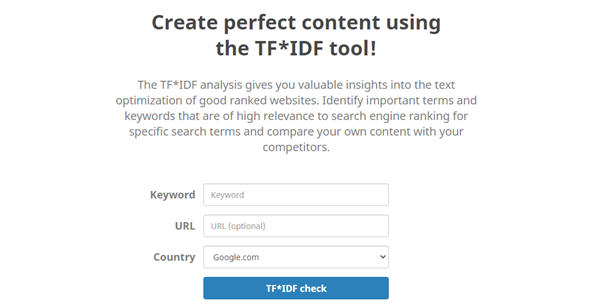Difference between revisions of "Inverse Document Frequency"
Ralph.ebnet (talk | contribs) (→How does inverse document frequency work?) |
Ralph.ebnet (talk | contribs) (→What is inverse document frequency) |
||
| Line 9: | Line 9: | ||
In English, common words like a/the/is/in, although important for making correct and understandable sentences, don’t provide a lot of information. Since these words, also known as stop words, appear multiple times in nearly all English documents/webpages, IDF can help filter these words out by assigning a very low importance to them. | In English, common words like a/the/is/in, although important for making correct and understandable sentences, don’t provide a lot of information. Since these words, also known as stop words, appear multiple times in nearly all English documents/webpages, IDF can help filter these words out by assigning a very low importance to them. | ||
| − | On the contrary, words that are rarer are seen as more important and thus are given a higher value. IDF is often used in combination with other methods for gauging the relevance of documents/webpages in sorting algorithms. It’s also used in combination with term frequency (TF) for optimizing content in SEO as will be explained further down this article. | + | On the contrary, words that are rarer are seen as more important and thus are given a higher value. IDF is often used in combination with other methods for gauging the relevance of documents/webpages in sorting algorithms. It’s also used in combination with [[Term Frequency|term frequency (TF)]] for optimizing content in SEO as will be explained further down this article. |
== How does inverse document frequency work? == | == How does inverse document frequency work? == | ||
Revision as of 12:42, 30 January 2021
Contents
What is inverse document frequency
Inverse document frequency, also called IDF, is a method of gauging how unique a term is that is used in a piece of content. IDF looks at the number of times a term is used in other pieces of content in a database, assigning a higher value to words used less often. It is used to measure how much information a word adds to the piece of content.
Along with various other uses, IDF can be used for filtering unimportant words out of a text and supporting computer programs in filtering and ordering documents by judging the relevance of a document based on the importance of certain words.
In English, common words like a/the/is/in, although important for making correct and understandable sentences, don’t provide a lot of information. Since these words, also known as stop words, appear multiple times in nearly all English documents/webpages, IDF can help filter these words out by assigning a very low importance to them.
On the contrary, words that are rarer are seen as more important and thus are given a higher value. IDF is often used in combination with other methods for gauging the relevance of documents/webpages in sorting algorithms. It’s also used in combination with term frequency (TF) for optimizing content in SEO as will be explained further down this article.
How does inverse document frequency work?
Inverse document frequency is measured using a formula. This formula compares the number of times different words are used in a large number of documents. By doing this, each term is assigned an IDF weight which shows how important a certain word is. The formula used for this calculation is given below.

ND = total number of pages
fi = number of pages containing term i
What can inverse document frequency be used for?
Inverse document frequency is a method that can be used to determine how important a word is, or how unique a piece of content is. It is used in information retrieval (IR), which is the search for a relevant document/page or otherwise relevant information in a larger database of documents/pages. IR is an important part of machine learning and keyword extraction. By understanding the importance of a term, it can be much easier to filter through millions of documents to find the most important ones based on the searched term and other relevant words.
IDF vs term frequency
The main difference between term frequency and IDF is that term frequency alone doesn’t take the importance of a term into account. IDF focuses on the importance of words in a document/page based on the uniqueness when compared to other documents/pages. Both of these methods have been used in information retrieval, but are mostly used in combination for more effective information retrieval.
Inverse document frequency and TF-IDF
IDF is a part of the TF-IDF method for retrieving relevant information from an index/database. TF-IDF combines term frequency and inverse document frequency in order to find the most relevant bits of information in a database/index. This could be an index of documents or webpages but could also be other forms of data.
By looking at both the importance of the different terms as well as the frequency the terms are used, the TF-IDF assigns values to the words, which can help sorting algorithms to more effectively sort large amounts of information.
How it helps your SEO
IDF is a useful tool for SEOs if used correctly. It can help with extracting important keywords, as well as help you in creating unique and relevant content when used in combination with term frequency. TF-IDF allows you to compare the content on your webpage with the content on other webpages that rank for a particular keyword. This helps you optimize your content. Our TF*IDF tool makes this easier by calculating the values for you and indicating how often you should add or remove a term.

Screenshot of Seobility’s TF*IDF tool, which allows webmasters to optimize their content using TF*IDF.
Related links
- https://www.searchenginejournal.com/google-tf-idf/304361/#close
- https://www.sciencedirect.com/topics/computer-science/inverse-document-frequency